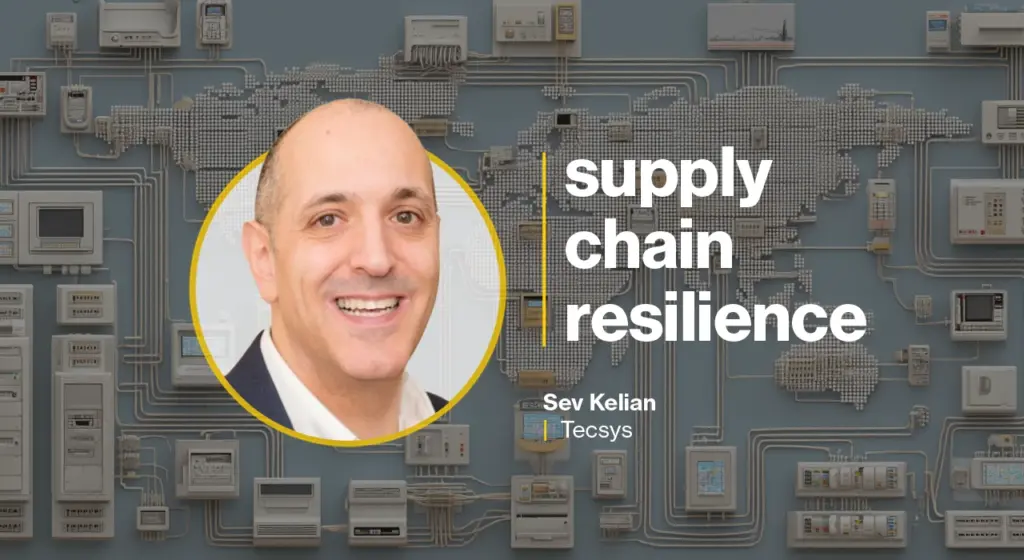
In a recent interview, Sev Kelian, Chief Information Security Officer (CISO) and Vice President of Security at Tecsys, outlined strategies for enhancing supply chain resilience. Organizations are increasingly recognizing the importance of viewing supply chain management as a comprehensive framework that integrates procurement, planning, and risk management, rather than merely a logistics challenge.
Kelian emphasized that a common misconception is underestimating the role of technology in this process. Digital tools are no longer optional; they are crucial for achieving visibility, predictive analytics, and automation across the supply chain. He pointed out that organizations must embrace a dynamic strategy that evolves in response to changing market conditions and emerging threats.
One significant error organizations often make is prioritizing efficiency at the expense of resilience. Lean operations, while cost-effective, can leave businesses vulnerable to disruptions. “Resilience is about layered defenses and adaptive response plans,” Kelian noted, highlighting that both cyber and physical risks must be treated as interconnected challenges.
Integrating Cyber and Physical Security
To effectively address these challenges, organizations need to embed security measures throughout every layer of the supply chain. This includes everything from vendor onboarding to logistics execution. Kelian advocates for leveraging advanced visibility tools and adopting zero trust principles to ensure comprehensive protection.
The integration of cyber and physical resilience can help organizations anticipate and recover from cascading threats. Continuous monitoring of digital vulnerabilities, coupled with contingency planning for physical disruptions, is essential. This approach should involve adaptive playbooks and secure collaboration with supply chain partners, which are vital for maintaining operational continuity and trust.
Emerging technologies are driving this transformation. For example, blockchain technology enhances transparency and trust across multi-tier supplier relationships. Additionally, digital twins facilitate real-time modeling of potential disruptions, allowing teams to optimize decisions proactively before they impact operations.
A Roadmap for Resilience
Kelian outlined a practical multi-step roadmap for building a resilient supply chain. The first step involves establishing visibility and data integration, setting baseline Key Performance Indicators (KPIs) such as on-time delivery and inventory accuracy. The second step introduces automation and advanced analytics to improve forecasting and reduce cycle times.
The third step embeds resilience measures, including supplier diversification and cyber-physical risk controls, with specific metrics to gauge risk reduction and recovery time. Advancing to the fourth step involves implementing predictive and adaptive capabilities through technologies like digital twins and blockchain, ensuring continuous improvement and sustainability.
This roadmap is designed to adapt to evolving market conditions and emerging threats, keeping supply chains agile and secure. Each step should link to measurable outcomes, such as cost-to-serve reduction and improved service levels, making progress transparent and return on investment evident.
Kelian emphasized the importance of reframing the conversation around resilience investments. By positioning resilience as a strategic enabler, organizations can demonstrate its value in terms of business continuity, customer trust, and competitive advantage. Rather than focusing solely on immediate returns, it is essential to highlight the measurable risk reductions and regulatory compliance that come with robust resilience strategies.
Engaging executives early in the process is critical. Aligning resilience initiatives with corporate objectives and showcasing real-world scenarios can illustrate how effective resilience measures safeguard revenue streams and facilitate recovery during crises. When leaders view resilience as vital to both performance and shareholder confidence, investing in these strategies becomes a priority rather than a discretionary expense.
As organizations navigate an increasingly complex landscape, the integration of technology and strategy for supply chain resilience will be crucial for future success. The vision presented by Kelian points to a future where supply chains are not just resilient but also secure, ready to confront whatever challenges lie ahead.







